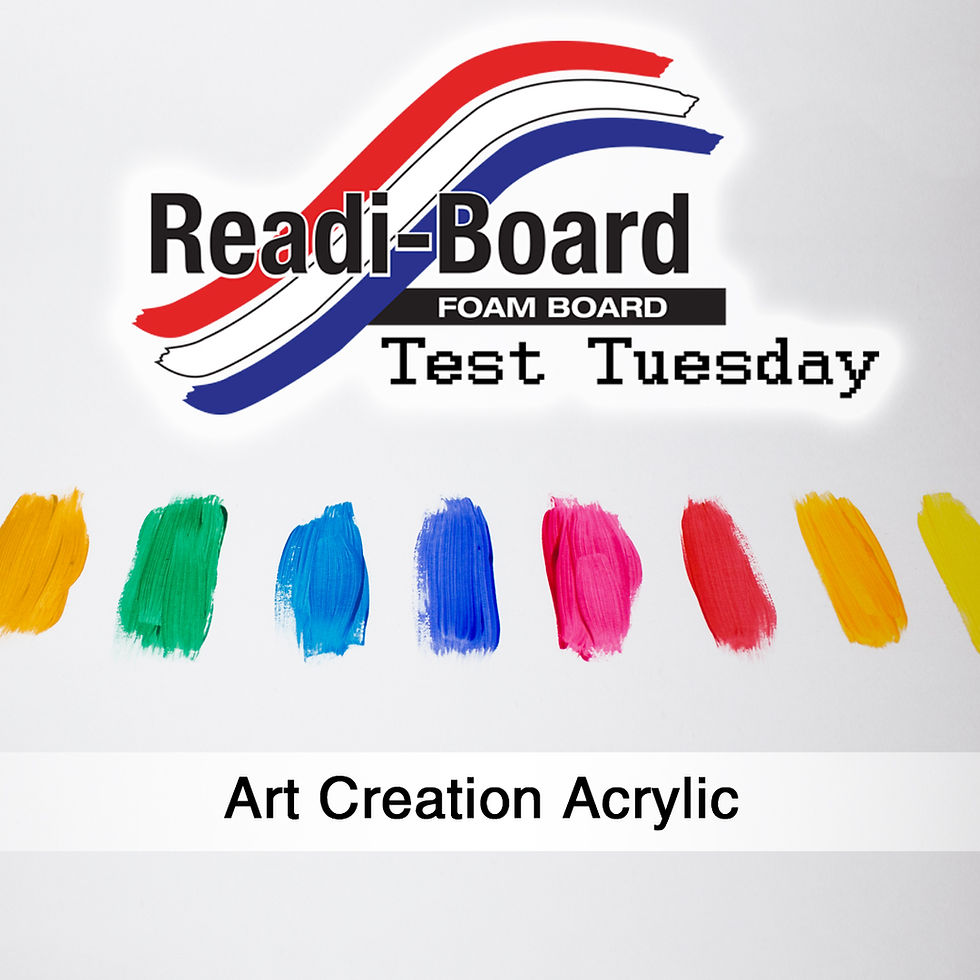Test Tuesday: Hair Dryer and Heat Gun
- sjulien0
- Dec 1, 2020
- 2 min read

In this Test Tuesday we are testing at how heat affects foam board. This Test Tuesday also happens to be part of the preparation for the upcoming Readi to Craft video that will be released later in the week.
I began by using a hair dryer, as this would be the tool I use I for upcoming craft. Previous to applying heat I tested the dryer on my mat and determined that the hottest that hair dryer could get my self-healing cutting mat’s surface was 150°F. It took just over 2 minutes of concentrating the airflow on one point to get up to this temperature.
On all the samples, I applied heat from the hair drying for 30 seconds. On average the surface temperature of the foam board rose 47°F reaching an average surface temperate of 130°F. However, none of the samples showed any sort of warping or damage at these temperatures which meant that that I could successfully complete my craft without the worry of damage my foam board.
I switched to a heat gun to continue my experiment. I applied heat on the samples until there was a noticeable change in each peice. The standard Readi-Board samples changed at about 210°F, with the white changing at a slightly lower temperature and the black at a slightly higher. There was only a few degrees’ variance between these. As you may expect the heavier paper and denser foam allowed the Adams Premium samples to better withstand the heat, averaging 240°F before damage was noticeable. The Readi-Grid sample reacted the same as the Adams Premium samples.

Readi Water Resistant sample showing signs of damage from heat gun.
The Readi Water Resistant sample began to change at about 215°F. I took two separate readings on the Readi-Erase sample. At approximately 200° the dry erase facer began to bubble and pull away from the foam, but it wasn’t until about 240° that the foam beneath began to see damaged.

Normal No Paper sample (on left) vs. No Paper sample damaged by heat gun (on right).
Without the paper facer to offer protection I noticed a slight change in the foam’s surface area when it reached 160°. The damage to the foam became very noticeable when the temperature reached 200°.
I DO NOT recommend using a heat gun with any of the foam board samples, nor to I recommend repeating this experiment. There were numerous safety precautions observed to complete these tests.
Hair dryers can vary on how much heat they produce. I would test the temperature for the particular hair dryer you intend on using. Based on the dryer I used and the environment I worked in, the hair dryer was perfectly fine when used on my foam board samples.





Comments